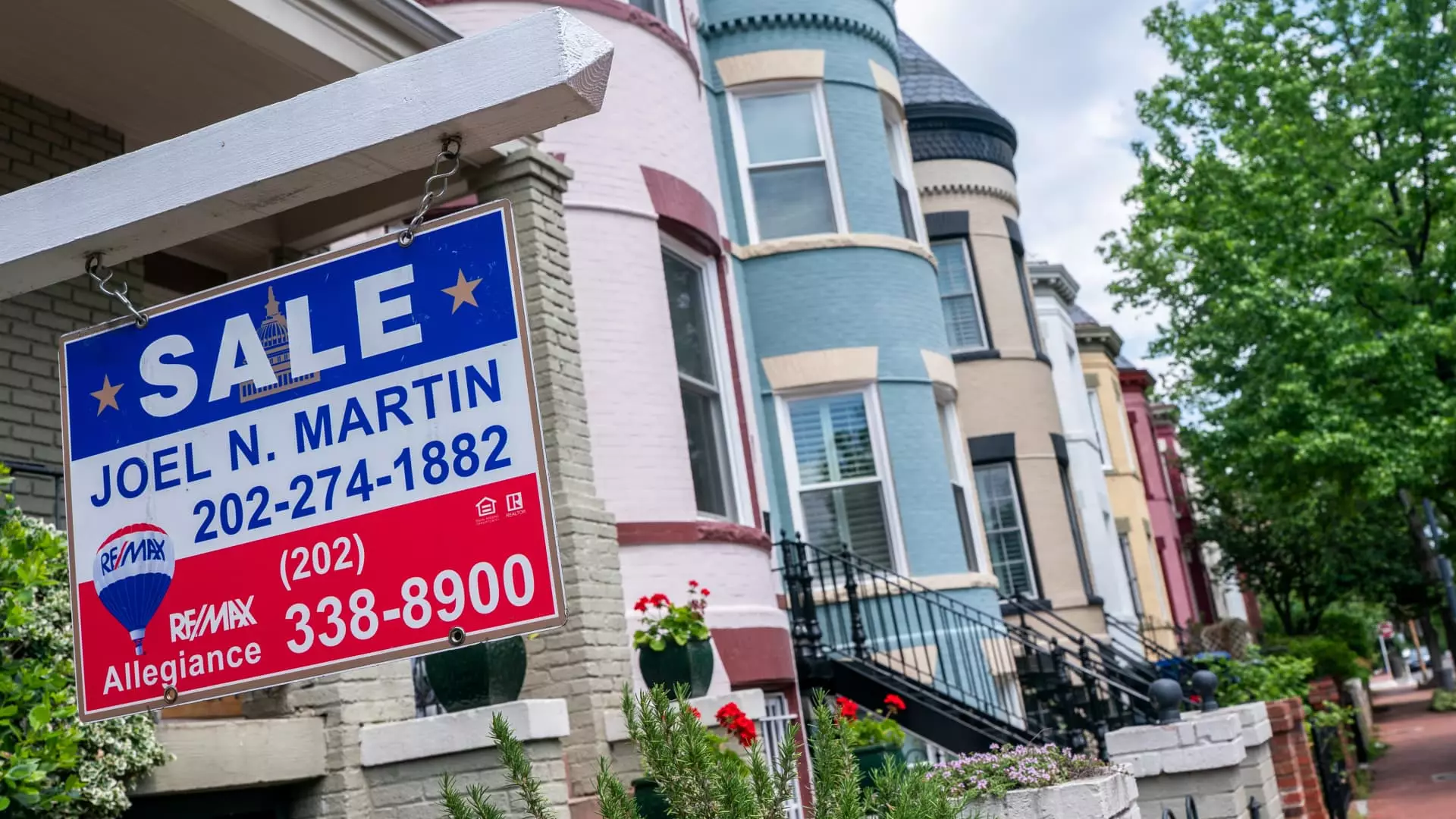As we navigate through the tumultuous currents of the spring housing market, it becomes painfully clear that obstacles remain insurmountable for many prospective buyers. High-interest rates have compounded the already precarious state of consumer confidence, resulting in a housing landscape that feels more like a minefield than an opportunity. Recent reports indicate that sales of previously owned homes plummeted by 0.5% from March to a seasonally adjusted annual rate of 4 million units in April. This figure marks the slowest pace for April since the dark days of 2009, a grim statistic that underscores the ongoing struggle within the sector.
Disappointments are rife, with a year-over-year decline of 2% further compounding the woes of the housing market. Economists had expected a modest uptick of 2.7%, indicating a significant disconnect between hopeful projections and actual market performance. A closer examination of these figures reveals a chilling reality: the contracts who led to April closures were likely signed in early spring, at a time when mortgage rates were not yet trending higher—an alarming sign of what’s to come as prospective buyers digest the full weight of rising costs.
Demand Meets Disillusionment
Despite the discouraging numbers, Lawrence Yun, chief economist for the National Association of Realtors, remains cautiously optimistic, asserting that pent-up demand for housing persists. This sentiment suggests that even amidst economic uncertainty, the desire to purchase homes remains intact. Yet, the irony lies in the fact that this unfulfilled demand has been stymied by prohibitive interest rates and a lack of suitable inventory. Yun noted that home sales have hovered at roughly 75% of pre-pandemic levels for three years, even as employment has surged, adding further complexity to an already intricate scenario.
Inventory levels have taken a surprising turn, jumping 9% month-over-month and reaching almost 21% higher than the same period last year. With 1.45 million homes for sale by the end of April, we’re witnessing a precarious balancing act: a 4.4-month supply, the highest in five years, yet still below the six-month threshold that traditionally denotes a balanced market. In light of these shifts, one could argue that buyers are finding themselves in a somewhat enhanced negotiating position. However, the glimmer of hope for negotiating better deals is quickly dimmed by the still-high median price of existing homes, which reached $414,000—a record for the month of April.
Price Stability Amid Sliding Sales
Interestingly, while prices have been on the rise, the rate of appreciation remains strikingly subdued, with a mere 1.8% increase year-over-year—the slowest growth since July 2023. It is within this context that we also see noteworthy geographical disparities, with price reductions evident in both the South and West. Yet, Yun’s assertion that we are still in a mild seller’s market does not tell the whole story. The mounting inventory levels suggest a recalibration of market dynamics where buyers might finally have the upper hand.
However, this supposed upturn comes with its own brand of disquiet. Homes are languishing on the market for an average of 29 days, a duration longer than both the previous month and the same time last year. First-time buyers represent a stable 34% completion rate in sales, an unchanged metric that suggests stagnation rather than growth. Additionally, rising cancellation rates, jumping to 7% in April from the former 3% to 4% average, highlight the ever-increasing frustration and disillusionment among prospective buyers.
Wealth Disparities Deepen
While the upper-end market is currently thriving—sales of homes priced above $1 million rising nearly 6% year-over-year—this flourishing segment starkly contrasts with the dismal state of homes priced between $100,000 and $250,000, which saw a drop of over 4%. Yun’s observation linking the decline of high-end sales gains to stock market instability casts a shadow over the prosperity of this sector. Rising wealth disparities not only exemplify the ongoing divide within American society but also threaten to perpetuate socio-economic inequities for the foreseeable future.
In sum, the current state of the housing market paints a portrait of anxiety and uncertainty. The struggle to find balance, as exemplified by contrasting supply and demand figures, underscores the pressing need for shifts in fiscal and monetary policy, aiming to rebuild a more equitable housing landscape. Facing this grim portrait, one must grapple with the urgent questions of how we, as a society, can facilitate genuine progress in a clearly fractured system.


Leave a Reply